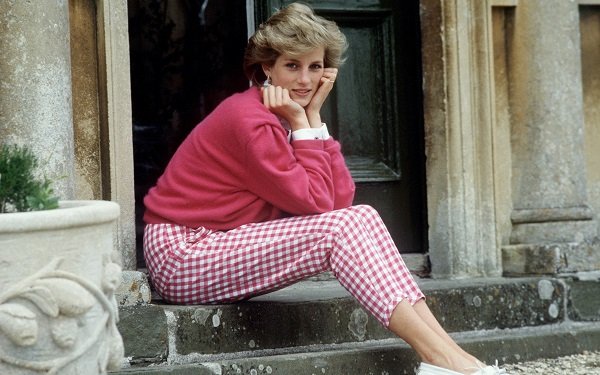
The summer of Diana is in full swing.
August 31 will mark the 20th anniversary of her death at age 36 in the Paris car crash that shocked the world. It was Labor Day weekend.
On TV last week, ABC had a two-part, four-hour
prime-time special about her life and death, “The Story of Diana.” The show, produced in association with People magazine, did quite well.
This week on National Geographic
it was “Diana: In Her Own Words,” running two-and-a-half hours. (Photo above courtesy of NatGeo.)
This retelling of her life story relied heavily on the taped interviews she did in
1991 for author Peter Morton in which she revealed her life of turmoil as the wife of Prince Charles. She married him in 1981 when she was 19.
There have been other Diana specials this year
such as last May's “Princess Diana: Her Life, Her Death, The Truth” on CBS. And there will likely be more.
advertisement
advertisement
If the two Diana specials of the past week demonstrate anything, it's
that her life story was so epic that it needs multiple hours to tell. They were both great shows.
One theme snaking through both of them was the story of how she was hounded by the press,
particularly packs of paparazzi who not only staked her out and stalked her around the clock, but would also physically collide with her -- adding occasional assaults to the charges it is easy to
level against them.
Almost everyone agrees by now that the paparazzi bear at least part of the responsibility for causing some of the conditions that led to her fatal smash-up.
As the
documentaries all point out, payoffs for exclusive Di photos in those days could reach $1 million per photo. The photogs were zealous, to say the least.
The culprits cited most often
were the London papers -- most notably the raucous London Sun, owned by Rupert Murdoch. But other print pubs all over the world were just as obsessed with her, including the co-producing entity
of ABC's four-hour documentary, People magazine.
As seen in the Di specials, the paparazzi pack mentality of the 1990s came across as yet another relic of the era before all of the
technology we have now.
With the average person today holding the ability to shoot photos or videos in the palm of his or her hand, I suspect that the days are over for professional
photographers being paid a million dollars for an exclusive photo of a celebrity.
On a smaller scale, you see evidence of this on TV all the time. On both local and national newscasts, for
example, you see smartphone footage of dramatic events such as fires, natural disasters and daring rescues much more often than you see video shot by professional camera crews from TV stations and
networks.
This is because bystanders at the scene of these news events have a knack for whipping out their phones and recording them. The quality of the footage is often terrible, but it does
have an immediacy to it that the pros can't match, mostly because they cannot get to the scene faster than someone who is already there.
Footage shot by the public is cheaper too than
deploying professionals. TV news organizations love anything that is cheaper.
Princess Diana may have been the last international celebrity of her caliber that we will ever see. She was the
biggest of the ’90s celebrities by far, although that decade also gave us O.J. Simpson's murder trial, and the Monica Lewinsky-Clinton scandal.
Somehow, the celebrity stories seemed
bigger then, and so did the media that covered them.